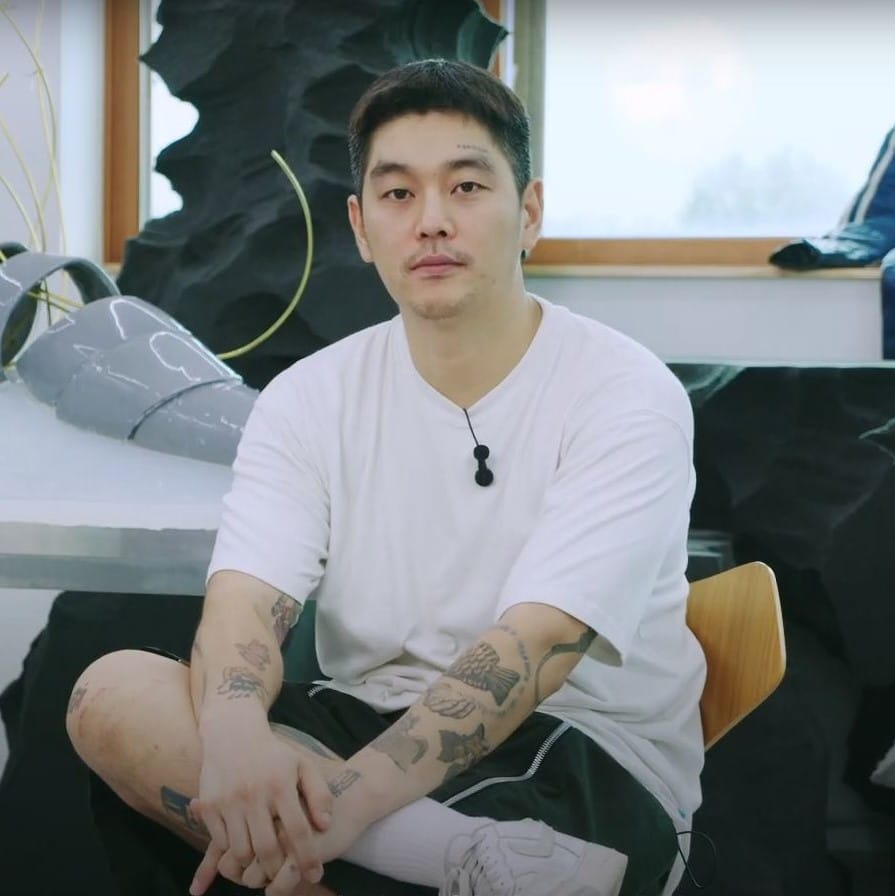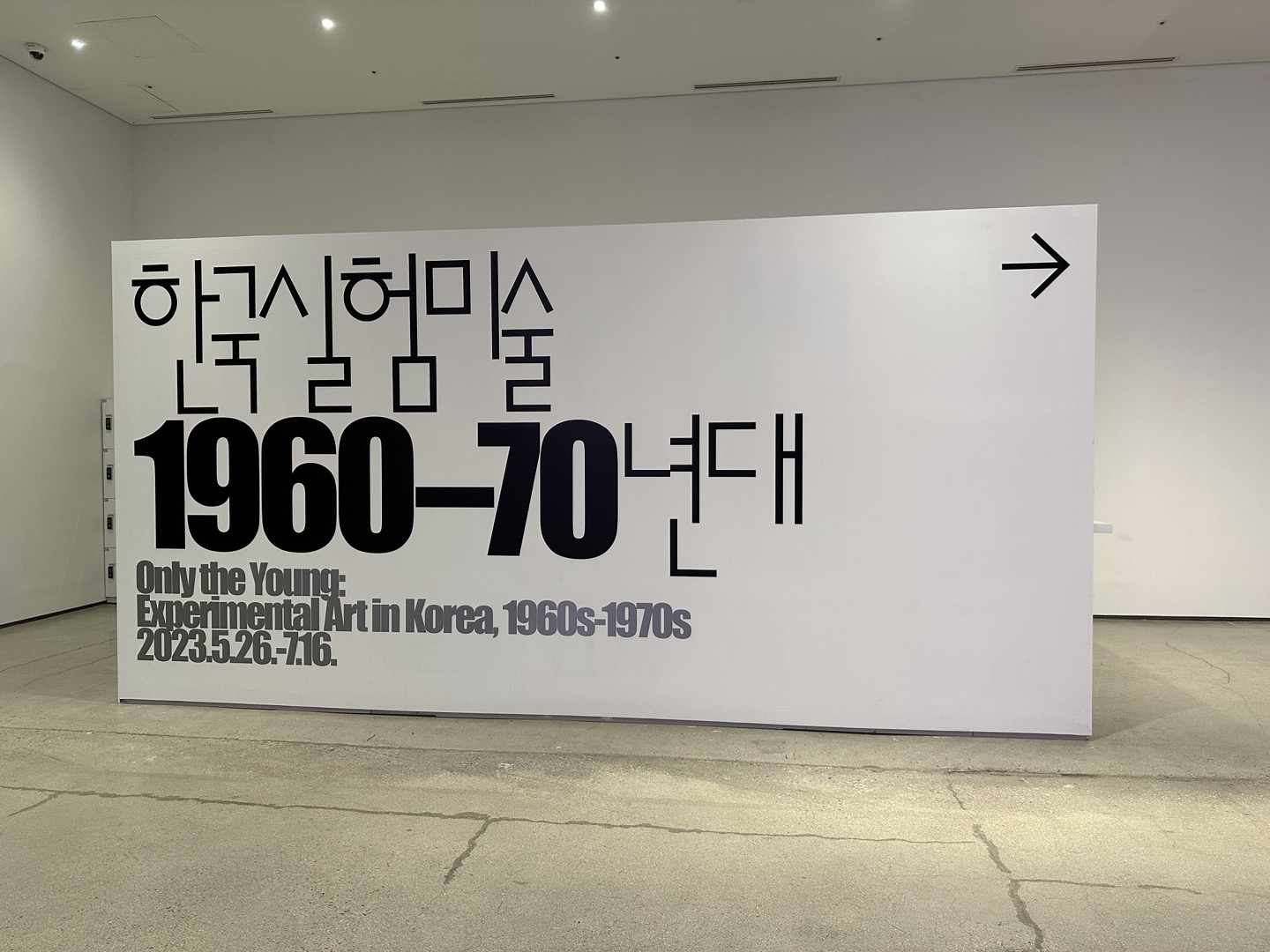This article will provide a brief introduction to the prominent groups such as Korean Avant-Garde Association” (A.G., 1969–1975), “Space & Time” (S.T., 1969–1981), and “The Fourth Group” (1970).
 Exhibition poster image of AG’s “Realiser et la Realite.” (December 6, 1971 - December 20, 1971) Image provided by Kim Daljin Art Research and Consulting.
Exhibition poster image of AG’s “Realiser et la Realite.” (December 6, 1971 - December 20, 1971) Image provided by Kim Daljin Art Research and Consulting.In 1967, the groups “Mudongin (Zero Group),” “Origin Society,” and “Sinjeon dongin (New Exhibition Group)” that participated in The Young Artists Coalition Exhibition laid the foundation for the emergence of several groups that would profoundly influence the trajectory of experimental art in Korea.
Among these prominent groups were the “Korean Avant-Garde Association” (A.G., 1969–1975), “Space & Time” (S.T., 1969–1981), and “The Fourth Group” (1970).
The A.G. group, established in 1969, demonstrated a more organized approach to avant-garde art compared to previous groups. Notably, it was the first group to involve art critics. Art critics Kim Inhwan, Oh Kwang-su, and Lee Il, along with young experimental artists of the time (Kim Kulim, Kim Tchah-Sup, Kim Han, Park Suk Won, Park Chongbae, Suh Seung-Won, Shin Hak-Chul, Shim Moon-seup, Lee Seung-taek, Choi Myoung Young, and Ha Chong-hyun), established a theoretical framework while publishing magazines and organizing exhibitions. This collective effort was driven by a shared vision to create a new order in the impoverished Korean art scene under the strong influence of avant-garde art, significantly contributing to the development of Korean art and culture.

Lee Kun-Yong, ‘Logic of Hand’ (1975–2018). Four chromogenic prints. 85 x 85 cm each. Edition 1 of 2. © Lee Kun-Yong. Leeum Museum of Art, Seoul. Courtesy the artist.
Furthermore, they organized the group with a clear purpose and mission, drafted a constitution, and formed a steering committee to demonstrate their organizational activities. A.G. published a total of four journals, introducing trends in Western art, art theory, and artist studies while also addressing the reality, reflection, and future direction of the Korean art world. Their emphasis on the “avant-garde” concept within Korean contemporary art history, combined with the collaboration between artists and art critics, filled a crucial gap in the theoretical aspect of Korean avant-garde art.
Although A.G. eventually disbanded, it served as a crucial model that paved the way for other avant-garde art collectives, such as S.T.
Founded primarily by young artists with a keen interest in contemporary art theory, the S.T. group initially started as a society but gradually evolved into an organization that engaged in creative work and concurrent theoretical research on sculptural art. Art critic Yoon Jinseop remarked that “the significance of S.T. in Korean contemporary art can be found in the aspect of ‘deepening art theory.'” Over a span of ten years, the group organized eight exhibitions and held open seminars discussing contemporary art theory at the time while publishing numerous newsletters.
Participating artists included art critic Kim Bok-young, as well as Lee Kun-Yong, Sung Neung Kyung, Kim Yongmin, and Choi Won Gun, among others. The S.T. group based their artistic endeavors on the theories they encountered during seminars and discussions and sought to break away from traditional art materials and modes of expression. Utilizing various media such as objects, natural materials, photography, events, and installations, they explored issues of temporality and place, the pursuit of logic, the relationship between objects and humans, and the nature of the concept of art.
 Kang Kukjin, ‘Visual Sense I, II’ (1968). Neon and stainless steel. 280 x 46 x 46 cm each. © Kang Kukjin Estate. Courtesy of the National Museum of Modern and Contemporary Art, Korea. Photo by Hwang Yangja.
Kang Kukjin, ‘Visual Sense I, II’ (1968). Neon and stainless steel. 280 x 46 x 46 cm each. © Kang Kukjin Estate. Courtesy of the National Museum of Modern and Contemporary Art, Korea. Photo by Hwang Yangja.Although there were significant variations and a wide gap in the understanding of conceptual art among its members—with only a few artists fully embracing the approach—the entire group developed works that leaned toward the conceptual art style.
“The Fourth Group,” which emerged in 1970, was a collective led by artist Kim Kulim, bringing together artists from diverse fields such as art, music, literature, film, theater, and dance. They aimed to blur the boundaries between artistic genres, bridge the gap between art and the public, and expand the concept of happenings. On August 15, the group organized the Funeral for Established Culture and Art (1970) performance; however, performance art was a novel concept at the time, and the authorities perceived it as a disruptive and anti-social activity against the social order. As a result, they were arrested and faced immediate trial at the Yeongdeungpo Police Station. Government constraints kept them from operating for a year, forcing them to announce their dissolution through a press conference. Nevertheless, their bold spirit of experimentation and defiance against established institutions and authorities left a significant mark on contemporary Korean art.
This series will continue next week.
References
- 국립현대미술관(The National Museum of Modern and Contemporary Art, Korea, MMCA)
- 구겐하임 재단(The Solomon R. Guggenheim Foundation)
- 오광수, “한국현대미술의 미의식”, 재원, 1995






























